Donald L Blount: 1935 - 2022
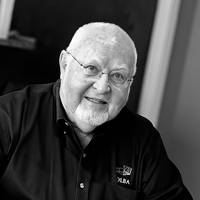
Donald L. Blount, an international esteemed technical expert in the field of high-speed craft hydrodynamics died on July 14, 2022 at the age of 87.Donald was driven all his life to do one job: design high-speed powerboats that could comfortably and efficiently run through rough water. His fascination with hydrodynamics began when he was a Virginia Tech co-op student working at the David Taylor Model Basin, the Navy's premier hydrodynamic research facility.Donald’s research contributions…
MSHIPCO Granted Vessel Model Testing Patent
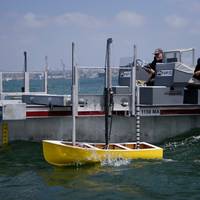
U.S. Patent and Trademark Office has granted MSHIPCO a patent for its Rapid Empirical Innovation (REI®) process including model testing method, platform structure and data acquisition systems. “Time and money are two of the biggest barriers to naval innovation,” explains Bill Burns, Co-Founder of MSHIPCO. Which design provides the best ROI (return on investment) for my maritime service? How far & how fast can a new design go in different sea states? What is the fuel efficiency at different speeds and payloads? Will the passengers be comfortable at high speeds in rough water?
International Submarine Races 2013 Awards
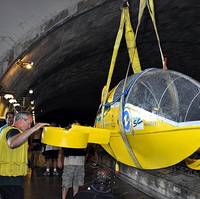
20 teams demonstrated their engineering prowess in week-long human-powered design competition. Intelligent Decisions (ID), Inc., a global IT systems integrator, congratulates Virginia Tech HPS and their vessel “Phantom 6” as the winner of the ID Innovation Award at the 12th International Submarine Races (ISR). The sponsors also recognizes the efforts of the University of Washington: HPS Team and their vessel “Wolverine 2” for their second place Innovation Award and OMER’s vessel “OMER 8” for their third place Innovation Award. ID has sponsored the races and the Innovation Award since 2011.
Engineers Put Next-Generation U.S. Navy Ships to the Test
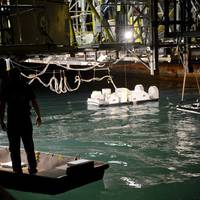
Naval Surface Warfare Center Carderock Division (NSWCCD) engineers conducted preliminary Ship to Shore Connector (SSC) seaworthiness model tests in the David Taylor Model Basin, April 22 - May 17. SSC is the replacement for the Navy's existing fleet of Landing Craft, Air Cushion (LCAC) vehicles, which are nearing the end of their service life. SSCs - like the LCACs they replace - will be primarily used to haul vehicles, heavy equipment, and supplies through varied environmental conditions from amphibious ships to over the beach.
12th International Submarine Races Announced
The Foundation for Underwater Research and Education (FURE) announced that the 12th International Submarine Races (ISR), a biennial engineering design competition, is scheduled to be held the week of June 22-26, 2013, at NSWC Carderock Division in West Bethesda, Md. The Foundation supports the ISR during the two-year process to design, build and take part in the human powered submarine competition. FURE’s objective via the ISR is to raise interest and participation in engineering education and to increase competence and awareness among ocean engineering students. This will be the 12th in the series of alternate summer races that test the creative skills of young engineering students from colleges, universities and technical and high schools from throughout the world.
Virtual Towing Tank State-of-the-Art and Future Trends
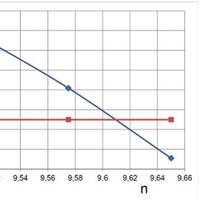
The use of computers to solve hydrodynamics problems in shipbuilding started in early days of scientific computing – as early as in aerodynamics and aerospace. Due to limited computing resources at that time, potential flow model was used in both aero- and hydrodynamics. However, while simulations based on Euler equations, Reynolds-averaged Navier-Stokes equations (RANSE) and most recently partially resolved Navier-Stokes equations (so-called “large-eddy” – LES – or “detached-eddy” – DES – simulations) have become established tools in aerodynamics…
Virtual Towing Tank State-of-the-Art and Future Trends
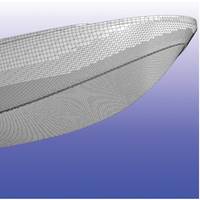
The use of computers to solve hydrodynamics problems in shipbuilding started in early days of scientific computing – as early as in aerodynamics and aerospace. Due to limited computing resources at that time, potential flow model was used in both aero- and hydrodynamics. However, while simulations based on Euler equations, Reynolds-averaged Navier-Stokes equations (RANSE) and most recently partially resolved Navier-Stokes equations (so-called “large-eddy” – LES – or “detached-eddy” – DES – simulations) have become established tools in aerodynamics…
M Ship Co. Thinks “Outside the Box”
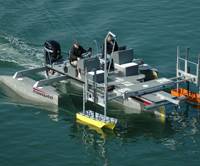
New Approach to Hull Testing & Rapid Empirical Innovation Program Unveiled. Hull testing literally has been taken out of the box and into the open ocean with M Ship Co.’s new Rapid Empirical Innovation (REI) program. The REI approach allows scaled-down hull models of recreational and racing sailboats, motor vessels, and cargo and military ships to be towed in real-life weather conditions by a self-powered FLOWT (short for “fast, low-cost, open-water testing”) platform rather than by a traditional towing mechanism used in a controlled indoor basin or “tank.” Among other advantages…
Carderock Hosts STEM Teachers
Naval Surface Warfare Center Carderock Division (NSWCCD), a field activity of Naval Sea Systems Command (NAVSEA), was host to a first of its kind weeklong summer institute for high school science, technology, engineering, and mathematics (STEM) teachers, June 28 - July 2, at the West Bethesda installation. "The goal of the institute is to expose teachers to the real-world of engineering so that they can bring relevance to the material they are teaching their students," said Toby Ratcliffe, NSWCCD's outreach coordinator and event hostess. For the initial summer institute, high school teachers from Maryland's Montgomery County and the District of Columbia were invited to Carderock to get a tour of the facilities in which the scientists and engineers work…
Human-Powered Submarine Races
The U.S. Navy's David Taylor Model Basin once again is the location for the 10th International Human-Powered Submarine Races (ISR), which is a biennial engineering design competition, June 22-26 at the Naval Surface Warfare Center Carderock Division. "Carderock Division is proud to host the 2009 International Submarine Races once again at our David Taylor Model Basin facility," said Carderock Division Commander Capt. Mark Thomas. The races are a challenge that began in 1989 and have grown to an event with participation of universities, high schools, corporations and privately sponsored teams from the U.S., Canada, Mexico and United Kingdom. Typical teams consist of high school and college engineering students who design, build and operate a human-powered submarine.
Naval Architecture: The Future is Now Forget Gas & Diesel ... Break Out the Limbs!
The David Taylor Model Basin was homeport for some curious looking contraptions recently, human powered submarines, which were designed and built by perhaps the next generation of naval architects and marine engineers. John Hussey reports. High-tech met low-tech, and college engineers competed against standout high school students in the seventh running of the International Submarine Races, the biennial human-powered engineering design competition completed at the world's largest indoor tank, the Naval Surface Warfare Center's Carderock Division David Taylor Model Basin, June 23-27, 2003. Drawing upon both brain and brawn, the scuba-clad future engineers and design entrepreneurs produced a range of submarines from the sublime to the surreal, all built to move forward on a 328-ft.
Speed Record Set at Sub Races
New world speed records were set earlier this month in both men’s and women’s divisions of the International Submarine Races, an engineering design competition that challenges the creativity of underwater inventers and entrepreneurs. One and two-person teams from the U.S., Canada and the Netherlands battled it out against the clock in the week-long biennial event held at one of the world’s largest indoor tanks -- the Naval Surface Warfare Center’s Carderock Division David Taylor Model Basin in Bethesda, Maryland. Omer 5, a sleek two-person submersible from the University of Quebec’s Ecole de Technologie Superieure (ETS) in Montreal, Canada, set a new two-person speed record of 7.061 knots. The Canadians’ women’s team also set a new record of 5.885 knots.
Maritime Technology Information Center Opens
It may lack a hull and a propeller, but the newly built Maritime Technology Information Center is destined to play an important role in the fleet’s future, said Tom Warring, center spokesman. The maritime technology information center is located on a campus filled with unique Navy research and design facilities, including the David Taylor Model Basin where artificial waves test the ocean-going stability of ship designs. Built for $12 million, the 50,000-square-foot conference center features state-of-the-art audio-visual technology. Planned down to the tiniest detail over five years, it allows Navy, industry and academia to easily share information and data about ships, ship systems and maritime engineering. Source: Gazette
Human-Powered Sub Races Held At Navy Lab
The U.S. Navy's David Taylor Model Basin provided the setting for the sixth running of the International Human-Powered Submarine Races (ISR), a biennial engineering design competition, held June 11-15 at the Naval Surface Warfare Center's Carderock Division in Bethesda, Md. This was the third time the event was staged in the 3,000-ft. test tank. The races are a challenge that began in 1989 and have grown to an event that has seen the participation of universities, high schools, corporations, and privately sponsored teams from the U.S., Canada and Mexico. Typical teams consist of student athlete-engineers in scuba gear, propelling and steering as the sub races the clock along a measured underwater course.
Wehausen, Leader in Marine Hydrodynamics, Dies
John V. Wehausen, professor emeritus of engineering science at the University of California, Berkeley, and one of the world's leading researchers in hydrodynamics, has died at the age of 92. Wehausen died of congestive heart failure on Oct. 6 at the Kaiser Oakland Medical Center. "Many of us in the marine academic field consider John Wehausen to be a pioneer in marine hydrodynamics," said Ronald Yeung, a UC Berkeley professor of mechanical engineering who chaired the campus's former Department of Naval Architecture and Offshore Engineering and considered Wehausen a mentor. "His background as an applied mathematician allowed him to set the framework for mathematical analysis of important ocean- and ship-related problems.







